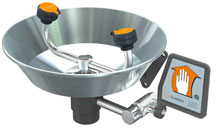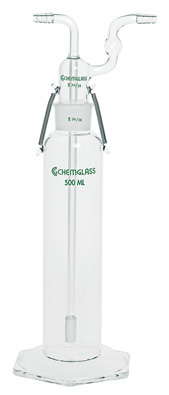| The Home page of ILPI's Safety Data Sheet (SDS) Resource, the leader in SDS information since 1995! | |
| The history and philosophy behind this resource. | |
| A curated collection of books and reference materials concerning Safety Data Sheets and closely related topics. | |
| Paste your plain text SDS into the SDS-Demystifier, and it will be converted into a hypertext-enriched document with links to detailed explanations of each key term. | |
| An extensive list of frequently asked questions about Safety Data Sheets including regulations, content, compliance, and more. | |
| A humorous take on Safety Data Sheet jargon. Fill in the blanks on our entry form to generate a personalized Unsafety Data Sheet to share with your coworkers. | |
| Since 1995, we've maintained this massive curated list of the best places to find Safety Data Sheets on the Internet. | |
| You are here! Way more than a glossary, this hypertext-enhanced resource covers hundreds of SDS-related terms and expert knowledge. Each entry includes both the SDS relevance and links to additional authoritative resources. | |
| Archived results of Safety Data Sheet related polls taken by some of our millions of site visitors | |
| The OSHA regulations behind SDS regulations, including the inspection guidelines and over 400 official interpretations letters under the Hazard Communication Standard | |
| Commercial suppliers of SDS authoring and management software as well as cloud compliance services. | |
| Commercial companies that will create SDS's for your specific needs as well as SDS translation companies. |

Safety signs, banners, and scoreboards? Get yours at Safety Emporium!

Safety Emporium carries all kinds of eye/face washes, safety showers, drench hoses and more.
Definition
The volume of an object describes the amount of three-dimensional space that it physically occupies.
Volumes appear on Safety Data Sheets in many contexts, such as the density of the material or the concentrations that pose a health or physical hazard. Some sheets may use either traditional English measurements (ounces, gallons, etc.) or metric ones (milliters, liters etc.). Not all sheets use both conventions, so here is a handy conversion calculator for some common measures of volume. The definitions of each unit are in the next section.
Additional Info
There are a variety of U.S. Customary, British Imperial and metric (SI) units for volume. Why is metric the best choice? Consider:
- The U.S. has two definitions of the pint and quart called the dry and wet measures. Each has a different size, something most Americans probably don't even realize.
- The U.S. system has an ounce which refers to a fluid volume, but also an ounce that refers to mass; these are not interchangeable. In general, an ounce of liquid does not weigh an ounce!
- The British Imperial system of liquid and dry measure uses only one ounce, pint and quart, but these differ from any of the U.S. measures as does the British Imperial gallon, peck and bushel.
This document uses only U.S. Customary liquid measures and metric units that are relevant to SDSs.
Many of the items you will find on an Safety Data Sheet come in both English (U.S. Customary System) and metric (International System or SI or cgs) units. The metric system has been adopted by almost every country except the United States. Even in the U.S., scientists and technical people use the metric system because of its ease of use.
| Unit | Equivalent measurements, comments |
|---|---|
| Ounce (oz, U.S.) | One fluid ounce = 1/8 of a half-pint = 1/16 of a pint = 1/32 of a quart = 1/128 of a gallon. One fluid ounce = 29.5735 milliliters. |
| Pint (pt, U.S.) | There are two half-pints = 16 ounces in a pint. There are 2 pints in a quart and 8 pints in a gallon. One pint = 473.176 milliliters. |
| Quart (qt, U.S.) | There are 4 half-pints = 2 pints = 32 ounces in a quart. There are 4 quarts in a gallon. 1 quart = 0.94635 liters = 946.35 milliliters. |
| Gallon (gal, U.S.) | There are 231 cubic inches = 128 ounces = 8 pints = 4 quarts in a gallon. 1 gallon = 3.785 liters. |
| Cubic inches (in3, cub. in., U.S.) | This is the volume occupied by a cube one inch on a side. 1 cubic inch = 16.387 cubic centimeters (cc and mL), There are 1728 cubic inches in one cubic foot and 231 cubic inches in one gallon. |
| Cubic feet (ft3, cub. ft., U.S.) | This is the volume occupied by a cube one foot on a side. 1 cubic foot = 1728 cubic inches = 28,316.8 cubic centimeters (cc, cm3, mL) |
| Cubic yard (yd3, cub. yd., U.S.) | This is the volume occupied by a cube one yard on a side. 1 cubic yard = 27 cubic feet = 0.7646 cubic meters. |
| Microliter (μL, metric) | The prefix "micro" means 1/1,000,000, so 1 microliter = 0.001 milliliters. Alternatively, there are 1,000 microliters in milliliter. One microliter = 0.0000338 fluid ounces. |
| Milliliter (mL, cc, cm3, metric) | The prefix "milli" means 1/1000, so 1 milliliter = 0.001 liters. Alternatively, there are 1000 milliliters in a liter. One milliliter = 0.0338 fluid ounces. Also known as a cubic centimeter (see distance units) because a cube 1 cm on each side has a volume of 1 ml. Because water has a density of 1.0, one ml of water weighs 1 gram. |
| Deciliter (dl, metric) | The prefix "deci" means 1/10, so 1 deciliter = 0.10 liters. (Try not to confuse this with the decaliter which is equal to 10 liters). There are 10 deciliters in a liter. |
| Liter (l, metric) | 1 liter is the volume of a cube that is 10 cm (1 decimeter) on each side (see distance units). There are 10 deciliters = 1,000 milliliters = 1,000 cubic centimeters = 1.057 quarts = 33.814 ounces in a liter. Because water has a density of 1.0, one liter of water weighs 1,000 grams = 1 kilogram. |
| Cubic Meter (m3, m3, metric) | This is the volume of a cube 1 meter (see distance units) on each side. One cubic meter = 1000 liters. Because water has a density of 1.0, one cubic meter of water weighs 1 metric ton = 1,000 kilograms = 1,000,000 grams (see mass units). |

Safety Emporium offers an extensive line of glassware for your volume needs.
SDS Relevance
Be very careful to note the units when reading numbers on an Safety Data Sheet. If you ever perform a calculation of any sort, always remember to write the units next to each number in your calculation and make sure that they cancel properly. See our distance units entry for examples of how to properly cancel units.
Further Reading
- Metric Information and Conversions Home Page at the National Institute of Standards.
- More info about the metric system, including prefixes, at ChemTeam.
- The U.S. Metric Association (USMA) has all sorts of useful information and history on the metric system.
- Cubic Feet to Liters Volume Conversion Example Problem at Science Notes.
- Converting Units at Chemistry LibreTexts™.
See also: area units, distance units, energy units, mass units, mole, pressure units, temperature units.